Conceptual Paper
Volume 2 Issue 1 - 2018
Insatiability, Hyperinsatiability and Insatiability Syndrome
Department of Physiological Sciences, Obafemi Awolowo University, Nigeria
*Corresponding Author: Oluwadare Ogunlade, Department of Physiological Sciences, Obafemi Awolowo University, Ile-Ife Osun State, Nigeria.
Received: January 22, 2018; Published: January 31, 2018
Abstract
The human body is a living vehicle propelled by insatiability, “an inner drive or motivation”. As the body grows and develops, the inner drive provides the impetus for survival and optimal performance economically, socially, physiologically and psychologically. The insatiability is not only essential for survival but it also provides intrinsic motivation for the achievement of a worthwhile goal in life. Above certain levels at a particular time, the insatiability in an individual may be too high resulting in the development of abnormal behaviors counterproductive to the society. This pathophysiological state is called insatiability syndrome. This article provides insight into insatiability as a characteristics of Homo sapiens, classifications and patterns of insatiability indices, the laws of insatiability, insatiability equation, objective assessment of insatiability, pathophysiology and management of insatiability syndrome.
Conclusion: Insatiability is a major unrecognized characteristics of Homo sapiens. Excessive level of insatiability results in hyperinsatiability state called insatiability syndrome which manifests with complex abnormal behaviours that are counterproductive to the society. Insatiability syndrome is a medical condition amenable to treatment.
Keywords: Insatiability; Hyperinsatiability; Insatiability syndrome; Homo sapiens
Introduction
The human body is a living vehicle propelled by “an inner drive or motivation” (Brunstein & Maier,2005). As the body grows and develops, the inner drive provides the impetus for survival and optimal performance economically, socially, physiologically and psychologically. This inner drive is the insatiability in the individual (Ogunlade, 2007). Everyone, irrespective of age, sex, race and location, has a measure of insatiability. The insatiability is not only essential for survival but it also provides intrinsic motivation for the achievement of a worthwhile goal in life. However, above certain levels at a particular time, the insatiability in an individual may result in the development of abnormal behaviors counterproductive to the society. At such a high level of insatiability an individual is said to have developed hyperinsatiability. The abnormal behaviors of features manifesting in an individual with hyperinsatiability are called insatiability indices (ii). This article provides insight into insatiability as a characteristics of Homo sapiens, classifications and patterns of insatiability indices, the laws of insatiability, insatiability equation and objective assessment of insatiability and management of insatiability syndrome.
Insatiability as a Major Characteristic of Homo Sapiens
Homo sapiens are human beings. The major characteristics of Homo sapiens (box 1.1) are Movement, Respiration, Nutrition, Irritability, Growth, Excretion, Reproduction, Insatiability and Ageing (Krow, 2017).
Homo sapiens are human beings. The major characteristics of Homo sapiens (box 1.1) are Movement, Respiration, Nutrition, Irritability, Growth, Excretion, Reproduction, Insatiability and Ageing (Krow, 2017).
| M Movement R Respiration N Nutrition I Irritability G Growth E Excretion R Reproduction I Insatiability A Ageing |
Box 1.1: Major characteristics of Homo sapiens.
While other attributes of life such as movement, respiration, nutrition, irritability, growth, excretion and reproduction had been studied and discussed in the past especially in primary and secondary schools (Ehindero., et al. 2009; Ramalingam, 2007) less attention was given to insatiability and ageing. This article examines insatiability as a major physiological attributes of the Homo Sapiens. The human body is a dynamic system. It is a living vehicle propelled by “an inner drive”. As the body grows and develops, the inner drive provides the impetus for survival and optimal performance of the body economically, socially, physiologically, and psychologically. This inner drive is called insatiability.
Definition of Insatiability
Insatiability is a major characteristic of life the Homo sapiens. Insatiability is defined as an inner drive of a Homo sapiens which provides the impetus for survival, productivity and sustainable development (Ogunlade, 2007).
Insatiability is a major characteristic of life the Homo sapiens. Insatiability is defined as an inner drive of a Homo sapiens which provides the impetus for survival, productivity and sustainable development (Ogunlade, 2007).
| Insatiability is an inner drive of Homo sapiens which provides the impetus for survival, productivity and sustainable development. |
Everyone irrespective of age, sex, race and location has a measure of insatiability. The insatiability is not only essential for survival but it also provides intrinsic motivation for the achievement of a worthwhile goal in life. However, above certain level at a particular time, the insatiability in an individual may results in the development of abnormal behaviours counterproductive to the society. At a high level of insatiability (hyper insatiability), an individual will manifest some features in form of abnormal behaviours. The abnormal behaviours or features manifesting in such an individual are called insatiability indices.
Insatiability Indices
The insatiability indices are indicators or markers of hyperinsatiability in an individual at a particular point in time.
The insatiability indices are indicators or markers of hyperinsatiability in an individual at a particular point in time.
| Insatiability indices are manifestations of excessive insatiability in an individual. |
These indicators are common in the society and are given different names by various groups of people. Common descriptive terms for insatiability indices include; sin, unrighteousness, immorality and vices. Insatiability indices include; adultery, fornication, rape, bribery, covetousness, deceitfulness, lie, lust, fraud, greediness, killing, laziness, selfishness, hatred, stealing and dead conscience (box 1.2).
|
Box 1.2: Insatiability Indices.
Descriptions of Insatiability Indices
Fornication: voluntary sexual intercourse between an unmarried man and unmarried woman.
Adultery: voluntary sexual intercourse of married man with a woman other than his wife or of a married woman with a man other than her husband.
Lust: a strong sexual desire without idealized feelings.
Bribery: giving or receiving of an offer in order to obtain a dishonest advantage.
Covetousness: strong desire to possess something that belongs to other person.
Lie: an intentionally false statement or impression.
Deceitfulness: the action of deliberately trying to make people believe in what is not true.
Fraud: deliberate action of making somebody believe something that is not true in order to get something for oneself. This involves cheating as in examination malpractices, rigging, advance-fee fraud (419) and other acts of deceitfulness.
Gluttony: the habit and practice of eating and drinking too much.
Greediness: excessive desire for wealth, power, position or food for oneself without consideration for the need of other people in the society.
Jealous: feeling or showing that one wishes one had somebody else’s advantages, possessions or achievements.
Hatred: strong dislike for good.
Killing: the act of taking the life of another person. This includes murder and assassinations.
Laziness: lack of energy or enthusiasm in doing work.
Rigging: fraudulent prearrangement geared at manipulating a situation or an election in favour of oneself.
Selfishness: thinking first of one’s own interests or needs or wants without a due concern for others.
Stealing: taking possession of something that belongs to other person without permission or legal right.
Rape: illicit sexual intercourse with a woman without her consent.
Dead Conscience: lack of personal awareness of right or wrong with regards to an individual’s own actions or thoughts. For an individual with dead conscience, his\her personal actions or thoughts become inconsequential to him or her no matter the perception of other people in the society. It is a dangerous state that predisposes to robbery, dictatorship, coup, terrorism, war and other acts of violence.
Fornication: voluntary sexual intercourse between an unmarried man and unmarried woman.
Adultery: voluntary sexual intercourse of married man with a woman other than his wife or of a married woman with a man other than her husband.
Lust: a strong sexual desire without idealized feelings.
Bribery: giving or receiving of an offer in order to obtain a dishonest advantage.
Covetousness: strong desire to possess something that belongs to other person.
Lie: an intentionally false statement or impression.
Deceitfulness: the action of deliberately trying to make people believe in what is not true.
Fraud: deliberate action of making somebody believe something that is not true in order to get something for oneself. This involves cheating as in examination malpractices, rigging, advance-fee fraud (419) and other acts of deceitfulness.
Gluttony: the habit and practice of eating and drinking too much.
Greediness: excessive desire for wealth, power, position or food for oneself without consideration for the need of other people in the society.
Jealous: feeling or showing that one wishes one had somebody else’s advantages, possessions or achievements.
Hatred: strong dislike for good.
Killing: the act of taking the life of another person. This includes murder and assassinations.
Laziness: lack of energy or enthusiasm in doing work.
Rigging: fraudulent prearrangement geared at manipulating a situation or an election in favour of oneself.
Selfishness: thinking first of one’s own interests or needs or wants without a due concern for others.
Stealing: taking possession of something that belongs to other person without permission or legal right.
Rape: illicit sexual intercourse with a woman without her consent.
Dead Conscience: lack of personal awareness of right or wrong with regards to an individual’s own actions or thoughts. For an individual with dead conscience, his\her personal actions or thoughts become inconsequential to him or her no matter the perception of other people in the society. It is a dangerous state that predisposes to robbery, dictatorship, coup, terrorism, war and other acts of violence.
Classification of Insatiability Indices
Insatiability indices can be classified on the basis of reversibility or evidence of occurrence.
Insatiability indices can be classified on the basis of reversibility or evidence of occurrence.
A. Classification based on reversibility
- Reversible insatiability indices; these include indices which can be reversed by behavioural modification. Examples include; covetousness, greed, lie, laziness and lust
- Irreversible insatiability indices; these include indices that are permanent at first occurrence. They cannot be modified after occurrence. Examples include; adultery, fornication, raping, killing.
B. Classification based on evidence of occurrence
Insatiability indices could be classified into two main groups based on evidence of occurrence. These include;
Insatiability indices could be classified into two main groups based on evidence of occurrence. These include;
- Major Insatiability indices
- Minor insatiability indices
Major Insatiability Indices
Major insatiability indices are manifestations of excessive insatiability associated with concrete evidence of performance. These include; bribery, stealing, adultery, fornication, raping, killing, rigging, gluttony, fraud and robbery. A major insatiability index has a value of two (2) per occurrence in an individual (Table 3.1)
Major insatiability indices are manifestations of excessive insatiability associated with concrete evidence of performance. These include; bribery, stealing, adultery, fornication, raping, killing, rigging, gluttony, fraud and robbery. A major insatiability index has a value of two (2) per occurrence in an individual (Table 3.1)
| Major insatiability indices | Value |
| Adultery | 2 |
| Fornication | 2 |
| Bribery | 2 |
| Stealing | 2 |
| Gluttony | 2 |
| Killing | 2 |
| Raping | 2 |
| Fraud | 2 |
Table 3.1: Assessment of major insatiability indices.
Minor Insatiability Indices
Minor insatiability indices are manifestations of excessive insatiability without a concrete evidence of performance. These include; covetousness, greediness, selfishness, hatred deadens conscience, lust and laziness. A minor insatiability index has a value of one (1) per occurrence in an individual (Table 3.2).
Minor insatiability indices are manifestations of excessive insatiability without a concrete evidence of performance. These include; covetousness, greediness, selfishness, hatred deadens conscience, lust and laziness. A minor insatiability index has a value of one (1) per occurrence in an individual (Table 3.2).
| Minor insatiability indices | Value |
| Covetousness | 1 |
| Greediness | 1 |
| Selfishness | 1 |
| Lust | 1 |
| Laziness | 1 |
| Hatred | 1 |
| Dead conscience | 1 |
| Lie | 1 |
| Jealous | 1 |
Table 3.2: Assessment of minor insatiability indices.
Patterns of Insatiability Indices
Insatiability indices usually occur in an organized or integrated network. A major insatiability index is usually preceded by a minor insatiability index. However, a minor or major index may occur singly and a major index may be preceded by two or more minor indices. The patterns of occurrence of insatiability indices include; singleton, couplet, triplet, quadruplet and complex network (Table 4.0).
Insatiability indices usually occur in an organized or integrated network. A major insatiability index is usually preceded by a minor insatiability index. However, a minor or major index may occur singly and a major index may be preceded by two or more minor indices. The patterns of occurrence of insatiability indices include; singleton, couplet, triplet, quadruplet and complex network (Table 4.0).
| Pattern | Number of insatiability indices |
| Singleton | 1 |
| Couplet | 2 |
| Triplet | 3 |
| Quadruplet | 4 |
| Complex network | ≥ 5 |
Table 4.0: Patterns of occurrence of insatiability indices.
Couplets
- Lust-fornication
- Lust-adultery
- Lust-raping
- Covetousness-stealing
- Greediness-bribery
- Greediness-gluttony
- Laziness-cheating
Triplets
- Lust-lie-fornication
- Lust-fornication-lie
- Lust-adultery-lie
- Lust-lie-adultery
- Lust-raping-lie
- Lust-fornication-hatred
- Lust-adultery-hatred
- Covetousness-stealing –lie
- Greediness-bribery-lie
- Hatred-deaden conscience-killing
- Laziness-covetousness-fraud
- Covetousness-fraud-lie
- Laziness-covetousness-stealing
- Laziness-cheating-lie
- Covetousness-stealing-lie
Quadruplets
- Covetousness-deaden conscience-robbery-killing
- Hatred-deaden conscience-killing-lie
- Laziness-covetousness-stealing-lie
- Greediness-deceitfulness-bribery-lie
- Jealous-Hatred-deaden conscience-killing
Complex Network
- Hatred-deaden conscience-killing-deceitfulness-lie
- Lust-fornication-lie-deaden conscience-killing-deceitfulness
- Lust-adultery-deceitfulness-lie-deaden conscience-killing
- Laziness-covetousness-stealing-lie-deceitfulness
- Covetousness-deaden conscience-raping-robbery-killing
Laws of Insatiability
Ogunlade’s First Law of Insatiability
The first law states that the total insatiability (I) in a living individual is equal to the inherent insatiability (j) plus the product of change of status and the sum of the insatiability indices (ii) in that individual at a particular point in time (Ogunlade, 2007).
I = ∑ii.∆S + j
Where, I = total insatiability, S = status, ii = insatiability indices, j = inherent insatiability
Ogunlade’s First Law of Insatiability
The first law states that the total insatiability (I) in a living individual is equal to the inherent insatiability (j) plus the product of change of status and the sum of the insatiability indices (ii) in that individual at a particular point in time (Ogunlade, 2007).
I = ∑ii.∆S + j
Where, I = total insatiability, S = status, ii = insatiability indices, j = inherent insatiability
The value of j = 1 for every living individual.
The minimum score for change of status (ΔS) for a living individual is 1. ΔS becomes zero with the death of the individual.
I = Σii. ΔS + j
I = Σii (S1 + ST 2) + j
If minimum ΔS is 1,
This implies that;
S1 = 1 and substituting 1 for j,
The minimum score for change of status (ΔS) for a living individual is 1. ΔS becomes zero with the death of the individual.
I = Σii. ΔS + j
I = Σii (S1 + ST 2) + j
If minimum ΔS is 1,
This implies that;
S1 = 1 and substituting 1 for j,
Therefore,
| I = ∑ii (1 + ST2) + 1 |
Where ST2 = significant transition in status (0, 1, 2, 3, 4……… ∞) depending on the frequency of the transition (Table 5.0).
A significant transition is defined as a change in status associated with leadership role.
| Frequency of Significant Transition | Value of S |
| None (no transition or transition without associated leadership role) | 0 |
| Once | 1 |
| Twice | 2 |
| Thrice | 3 |
| Four times | 4 |
Table 5.0: Assessment of Significant Transition in Status.
The expression {I = Σii (1 + ST2) + 1} is the insatiability equation and the score derived from the insatiability equation is called IScore.
Ogunlade’s Second law of insatiability
The second law states that summation of insatiability (I) in a group of people is directly proportional to violence (V) and inversely proportional to peace (P) experienced by the people (Ogunlade,2007).
∑I ∞ V/P
The second law states that summation of insatiability (I) in a group of people is directly proportional to violence (V) and inversely proportional to peace (P) experienced by the people (Ogunlade,2007).
∑I ∞ V/P
Implications of the Second Law of Insatiability
- The violence or peace experienced among a group of people depends on the level of insatiability in the society.
- Violence and consequent feeling of insecurity increase with increasing level of insatiability.
- Peace and consequent feeling of security diminish with increasing level of insatiability.
- For a reduction in violence, there must be a reduction in the level of insatiability.
- For restoration of peace in the society, contentment is the key.
Assessment of Insatiability
Insatiability can be measured by the use of insatiability equation derived from the first law of insatiability. The basic unit of insatiability is dare (D).
Insatiability can be measured by the use of insatiability equation derived from the first law of insatiability. The basic unit of insatiability is dare (D).
One dare (D) is the measure of insatiability in an individual whose sum of insatiability indices is equal to zero no matter the change of status.
I = Σii (1 + ST2) + 1
If no insatiability indices could be found in an individual,
Therefore, Σii = 0,
This implies that I = 0 x (1 + ST2) + 1
I = 1 D
If no insatiability indices could be found in an individual,
Therefore, Σii = 0,
This implies that I = 0 x (1 + ST2) + 1
I = 1 D
Illustration of Assessment of Insatiability
Illustration 1: A 48 year old man joined a political party in order to become the chairman of his local government with the sole aim of acquiring more wealth. The people of his local government did not have interest in him, so a very large number of them did not vote for him but with his connection with the electoral body, the election results were announced in his favour. He was sworn in as the local government chairman and after six months, he received an allocation of five million to build the town hall for his people; but he traveled abroad unknown to the people the save the money in a foreign bank. Calculate his I-score.
Illustration 1: A 48 year old man joined a political party in order to become the chairman of his local government with the sole aim of acquiring more wealth. The people of his local government did not have interest in him, so a very large number of them did not vote for him but with his connection with the electoral body, the election results were announced in his favour. He was sworn in as the local government chairman and after six months, he received an allocation of five million to build the town hall for his people; but he traveled abroad unknown to the people the save the money in a foreign bank. Calculate his I-score.
Solution
I = Σii (1 + ST2) + 1
Insatiability indices (ii) in the man; Greed-1, Rigging-2, Fraud-2
Σii = 5
ST2 = 1
I = 5 (1+1) +1
= 5 (2) +1
= 11D
Insatiability indices (ii) in the man; Greed-1, Rigging-2, Fraud-2
Σii = 5
ST2 = 1
I = 5 (1+1) +1
= 5 (2) +1
= 11D
Example II: A 20 year old man had a friend of about his age and both of them were in the same class. His friend was more brilliant than he is, so the friend won some scholarships while he did not win any. As a result of this, he hated his friend with a passion and thereafter planned that his friend should be executed. He got some armed men to deal with his friend mercilessly and at the end of it all, his friend died. People of the vicinity knew that these two friends were very close so they decided to ask him what could have killed his friend but he denied that he knew nothing about his friend’s death and he shed crocodile tears. Calculate his I-score.
Solution
I = Σii (1 + ST2) + 1
Insatiability indices (ii) in the man; Jealous-1, Hatred-1, Killing-2, Deceitfulnss-1, Lie-1
Σii = 6
ST2 = 0
I = 6 (1+0) +1
= 6 (1) +1
= 6+1
= 7D
Insatiability indices (ii) in the man; Jealous-1, Hatred-1, Killing-2, Deceitfulnss-1, Lie-1
Σii = 6
ST2 = 0
I = 6 (1+0) +1
= 6 (1) +1
= 6+1
= 7D
Example III: A playful 16 year old school girl was preparing to write exams and be promoted to the next class. After thinking over and over, she felt she could not read and understand to pass her exams, so she decided to befriend an unmarried male teacher so that she can pass her exams with good grades. She told the male teacher about her decision and he accepted the offer. She had sexual intercourse with the teacher. Calculate the I-score of for the lady and the teacher.
Solution
I = Σii (1 + ST2) + 1
Insatiability indices (ii) in the school girl; Laziness- 1, Lust-1, Fornication-2 Σii = 4
ST2 =0
I = 4 (1+0) +1
= 4 (1) +1
= 4+1
=5D
Insatiability indices (ii) in the school girl; Laziness- 1, Lust-1, Fornication-2 Σii = 4
ST2 =0
I = 4 (1+0) +1
= 4 (1) +1
= 4+1
=5D
Insatiability Table and Curve
Insatiability table is designed for periodic (usually monthly) assessment of insatiability. It serves as a diary for self evaluation. The insatiability curve reflects the level of insatiability over a period of time (usually a year).
Insatiability table is designed for periodic (usually monthly) assessment of insatiability. It serves as a diary for self evaluation. The insatiability curve reflects the level of insatiability over a period of time (usually a year).
Types of Insatiability Curves
- Transparent curve; monthly insatiability score is at 1D throughout a year of assessment.
- Borderline curve; monthly insatiability score is at 2D throughout a year of assessment.
- Corrupt curve; monthly insatiability score is equal or greater than 3D throughout a year of assessment.
- Unstable curve; monthly insatiability score fluctuates from one level to the other within a year of assessment or a curve which cannot be classified as transparent, borderline or corrupt.
Examples of Insatiability Tables and Curves
| Month | Insatiability Score(I-Score) |
| January | 1 |
| February | 1 |
| March | 1 |
| April | 1 |
| May | 1 |
| June | 1 |
| July | 1 |
| August | 1 |
| September | 1 |
| October | 1 |
| November | 1 |
| December | 1 |
Table 6: Insatiability Table for Mr F G.
| Month | Insatiability Score (I-Score) |
| January | 2 |
| February | 2 |
| March | 2 |
| April | 2 |
| May | 2 |
| June | 2 |
| July | 2 |
| August | 2 |
| September | 2 |
| October | 2 |
| November | 2 |
| December | 2 |
Table 7: Insatiability Table for Mrs K N.
| Month | Insatiability Score (I-Score) |
| January | 5 |
| February | 6 |
| March | 9 |
| April | 7 |
| May | 5 |
| June | 6 |
| July | 10 |
| August | 8 |
| September | 6 |
| October | 5 |
| November | 9 |
| December | 11 |
Table 8: Monthly Assessment of Insatiability in Mr S. I.
| Month | Insatiability Score(I-Score) |
| January | 4 |
| February | 8 |
| March | 1 |
| April | 6 |
| May | 1 |
| June | 5 |
| July | 2 |
| August | 4 |
| September | 2 |
| October | 1 |
| November | 4 |
| December | 11 |
Table 9: Insatiability Table for Mr ST.
Classification of Human Beings Based on I-Score
Human beings could be classified after a year of assessment into four categories based on the pattern of insatiability curve (Table 10).
Human beings could be classified after a year of assessment into four categories based on the pattern of insatiability curve (Table 10).
| Category | Type of Insatiability Curve |
| Class 1 | transparent |
| Class 2 | Borderline |
| Class 3 | Corrupt |
| Unclassified | Unstable |
Table 10: Classification of human beings based on pattern of insatiability curve.
Class 1- possesses a transparent insatiability curve (figure 1).
Class 2- possesses a borderline insatiability curve (figure 2).
Class 3- possesses a corrupt insatiability curve (figure 3).
Unclassified- possesses an unstable insatiability curve (figure 4).
Class 2- possesses a borderline insatiability curve (figure 2).
Class 3- possesses a corrupt insatiability curve (figure 3).
Unclassified- possesses an unstable insatiability curve (figure 4).
Hyperinsatiability and Insatiability Syndrome
Hyperinsatiability is relevant to every sector of human endeavor. As such, the behaviors of anyone with hyperinsatiability could adversely affect his or her wellbeing and the wellbeing of other people in the society.
Hyperinsatiability is relevant to every sector of human endeavor. As such, the behaviors of anyone with hyperinsatiability could adversely affect his or her wellbeing and the wellbeing of other people in the society.
| Hyperinsatiability occurs when the insatiability in an individual is above the normal level (I ≥ 3D) required for survival, productivity and sustainable development and is capable of adversely affecting the well-being of the individual and or that of other members of the society |
The ‘vital economic problems’ in the world in the contemporary time is partly consequential to the behaviors of some consumers with hyperinsatiability. The economists are trying to proffer solutions by formulating theories of needs and consumer behaviors but without addressing the issue of hyper insatiability within the consumer, there bound to be unresolved theories in the economic sector.
The basic social menace in the society Is mainly due ti the presence of hyper insatiability in some privileged individuals. Such influential people acquired excessive material resources for pleasure at the expense of the basic or non-negotiable needs of the majority of the people in the society. Hence, the emergence of insecurity and conflicts across the globe. The global insecurity cannot be resolved by acquisition of nuclear weapons or by launching attacks on suspected terrorists because many vanguards against terrorism are instruments of terrorism. This phenomenon explains the fragility of the global peace security and could be explained by hyper insatiability in minority of the world population.
The basic global health burden is related to hyperinsatiability. The privileged individuals driven by hyper insatiability excessively consume the edible resources at their disposal and are therefore predisposed to obesity, diabetes mellitus, hypertension, heart attack, stroke, cancer, and sudden death. On the other hands, the less privileged individuals, having been deprived of the basic or non-negotiable needs of life (by people with hyper insatiability), become victims of poverty and poverty-related diseases. Hence, hyper insatiability is an important link between non-communicable and communicable diseases.
Clinically, hyperinsatiability presents as a pathophysiological state called insatiability syndrome. The hallmark of insatiability syndrome is hyperinsatiability. The abnormal behaviors in a patient with insatiability syndrome are known as insatiability indices. Insatiability indices include lust, adultery, fornication, rape, greed, covetousness, stealing, killing, gluttony, rigging, laziness, selfishness, fraud and deceitfulness. Insatiability syndrome is often preceded by a prodrome called hyperinsatiability state.
Insatiability syndrome is a pandemic disease. In many nations of the world, the disease is often misconceived as a social menace called corruption (Iyanda,2012; Myint,2000). Among the Yoruba population dominantly in South-Western States of Nigeria, it is recognized and described as “jegudujera”, a state of decadence characterized by dissatisfaction, recklessness, embezzlement of public funds and excessive quest for satisfiers. People described by this term in the society are believed to be under the influence of political recklessness, a curse or an affliction of evil spirits, witches, wizards, heads, gods or Satan.
Insatiability Theory and Pathophysiology of Insatiability Syndrome
Ogunlade’s insatiability theory states that sustained imbalance between the bodily demands and needs due to neuronal dysfunction results in hyperinsatiability state culminating in evolution of integrated networks of abnormal behaviors geared towards getting satisfiers to meet the bodily demands for pleasure without considering the non-negotiable needs of other people in the society.
Ogunlade’s insatiability theory states that sustained imbalance between the bodily demands and needs due to neuronal dysfunction results in hyperinsatiability state culminating in evolution of integrated networks of abnormal behaviors geared towards getting satisfiers to meet the bodily demands for pleasure without considering the non-negotiable needs of other people in the society.
The centers in the brain which mediate insatiability and satiability are described as I-positive and I-negative centers respectively. The functions of the I-centers are to control the balance between the bodily needs and demands. Stimulation of I-positive or inhibition of I-negative center results in insatiability while stimulation of I-negative center or inhibition of I-positive center results in satiability. Sustained imbalance between the functions of I-centers (positive or negative) in favour of insatiability results in hyperinsatiability state culminating in development of network of abnormal behaviours.
Modifiers of I-centers are called I-factors. Positive I-factors stimulate I-positive center or inhibit I-negative center. Negative I-factor stimulate I-negative center or inhibit I-positive center. Most of the I-factors are proteinacious substances released in the body following ingestion, injection, or perception of satisfiers.
I-factors are satisfier specific. Common satisfiers include food, money, sex and drugs. Food as a satisfier has its I-factors. Positive I-factor for food stimulates appetite. They promote insatiability upon food consumption. An example of positive I-factor for food is neuropeptide Y (NPY). Negative I-factors for food reduce appetite. They promote satiety upon food consumption. Examples of negative I-factors for food include nesfatin – 1(Dore., et al. 2017; Oh-I., et al. 2006; Stengel and Tach,2010;) and corticotrophin releasing hormone (Majzoub,2006).
Classification of Insatiability Syndrome
Insatiability syndrome (IS) is broadly classified into two main groups:
Insatiability syndrome (IS) is broadly classified into two main groups:
- Classical IS
- Variants
- Sexual related IS (SIS)
- Academic related IS (ARIS)
- Extortion IS (EIS)
- Age-Modification IS (AMIS)
- Election-Related IS (ERIS)
- Voluble IS (VIS)
- Consumption-Associated IS (CAIS)
- Drug IS (DIS)
- Pecuniary IS (PIS)
- Power-Drunk IS (PDIS)
- Murderous IS (MIS)
- Contract-Related IS (CRIS)
- Material-Acquisition IS (MAIS)
- Religious IS (RIS)
- Stealing-Dominated IS (SDIS)
A. Classical Insatiability Syndrome (CIS)
Classical insatiability syndrome is characterized by two or more cardinal insatiability indices which include bribery, covetousness, lie, deceitfulness, fraud, greed, laziness, selfishness and stealing.
Classical insatiability syndrome is characterized by two or more cardinal insatiability indices which include bribery, covetousness, lie, deceitfulness, fraud, greed, laziness, selfishness and stealing.
B. Variants
The variant form of insatiability syndrome usually manifests predominantly with one insatiability index.
The variant form of insatiability syndrome usually manifests predominantly with one insatiability index.
1. Sexual Insatiability Syndrome (SIS)
People affected by the sexual insatiability syndrome are excessively desirous of sexual intercourse within or outside wedlock. The hallmark of sexual insatiability syndrome is lust. The affected people are usually involved in premarital sex or fornication, rape, adultery, or other forms of extramarital affairs. Descriptive terms of SIS include: satyriasis and nymphomania.
People affected by the sexual insatiability syndrome are excessively desirous of sexual intercourse within or outside wedlock. The hallmark of sexual insatiability syndrome is lust. The affected people are usually involved in premarital sex or fornication, rape, adultery, or other forms of extramarital affairs. Descriptive terms of SIS include: satyriasis and nymphomania.
Satyriasis refers to excessive and uncontrollable sexual desire in man. Nymphomania refers to excessive and uncontrollable sexual desire in woman. Satyriasis and nymphomania are extreme degrees of sexual promiscuity in man and woman respectively. Patient also may be involved in various types of sexual perversions such as homosexuality in other to satisfy the excessive sexual urge.
2. Academic Related Insatiability Syndrome (ARIS)
This variant of insatiability syndrome is characterized by examination malpractices, certificate forgery, and presentation of fake papers for academic promotions and acquisition of unmerited honorary academic degrees.
This variant of insatiability syndrome is characterized by examination malpractices, certificate forgery, and presentation of fake papers for academic promotions and acquisition of unmerited honorary academic degrees.
3. Extortion Insatiability Syndrome (EIS)
This variant is characterized by extortion of another person’s possession. People by this syndrome take pleasure in bribery.
This variant is characterized by extortion of another person’s possession. People by this syndrome take pleasure in bribery.
4. Age-Modification Insatiability Syndrome (AMIS)
People affected by this variant do manipulate their life records so that their birth certificates and other life documents reflect ages suitable for particular desired purposes in life. Clinically, the physical and biological characteristics of the body are inconsistent with the age of the patient. The hallmark of AMIS is age falsification.
People affected by this variant do manipulate their life records so that their birth certificates and other life documents reflect ages suitable for particular desired purposes in life. Clinically, the physical and biological characteristics of the body are inconsistent with the age of the patient. The hallmark of AMIS is age falsification.
Subtypes of AMIS
Early-Onset AMIS: Patient is young at the time of onset. In affected individual, the chronological age is modified to enable the person qualify for a particular job or school or service. It could down grading (declaration of lesser age) or upgrading (declaration of higher age). This may be parent-guided or self-induced.
Early-Onset AMIS: Patient is young at the time of onset. In affected individual, the chronological age is modified to enable the person qualify for a particular job or school or service. It could down grading (declaration of lesser age) or upgrading (declaration of higher age). This may be parent-guided or self-induced.
Late-Onset AMIS: Patient is an adult at the time of onset. In the affected individual, the chronological age is modified to enable the person continue with a service of an establishment or government for a longer period before retirement. In the later years, people affected by this disorder usually assume mode of dressing or fashion suitable for younger age groups so as to mask the effect of age on the body.
5. Election-Related Insatiability Syndrome (ERIS)
It is a variant of insatiability syndrome characterized by fraudulent political activities, empty political propaganda and rigging of election. It is common among people who are desperately seeking political status.
It is a variant of insatiability syndrome characterized by fraudulent political activities, empty political propaganda and rigging of election. It is common among people who are desperately seeking political status.
6. Voluble Insatiability Syndrome (VIS)
People affected by this variant are talkative. They gossip and take pleasure in dominating every discussion. Affected individuals always initiate discussions. They are not satisfied with the contributions of other people and prefer to have the last words in any discussion. It is also known as “first and last syndrome”.
People affected by this variant are talkative. They gossip and take pleasure in dominating every discussion. Affected individuals always initiate discussions. They are not satisfied with the contributions of other people and prefer to have the last words in any discussion. It is also known as “first and last syndrome”.
7. Consumption-Associated Insatiability Syndrome (CAIS)
CAIS is characterized by excessive consumption of food or drinks.
CAIS is characterized by excessive consumption of food or drinks.
Subtypes of CAIS
- Food CAIS
- Drink CAIS
- Combined CAIS
a. Food CAIS
People affected by this syndrome crave for food. They eat excessive amount of food. The hallmark is gluttony. Patients of this condition are regarded as gluttons or gourmands.
People affected by this syndrome crave for food. They eat excessive amount of food. The hallmark is gluttony. Patients of this condition are regarded as gluttons or gourmands.
b. Drink CAIS
Affected individuals consume excessive amount of fluid. The fluid may be in form of water, beverages (alcoholics or non-alcoholics) or concoctions. Alcohol specific CAIS is known as dipsomania.
Affected individuals consume excessive amount of fluid. The fluid may be in form of water, beverages (alcoholics or non-alcoholics) or concoctions. Alcohol specific CAIS is known as dipsomania.
c. Combined CAIS
People affected by this subtype consume both food and drinks in excessive amount.
People affected by this subtype consume both food and drinks in excessive amount.
8. Drug Insatiability Syndrome (IDS)
This variant is characterized by excessive consumption of drugs. Common drugs consumed by affected individuals include alcohol, coffee, kola, analgesics, food supplements and other forms of drugs of abuse such as cocaine, heroin and tobacco.
This variant is characterized by excessive consumption of drugs. Common drugs consumed by affected individuals include alcohol, coffee, kola, analgesics, food supplements and other forms of drugs of abuse such as cocaine, heroin and tobacco.
9. Pecuniary Insatiability Syndrome (PIS)
PIS is also known as pecuniary mania. People affected by this syndrome crave for money no matter what it cost them. They never satisfied no matter the amount in their possession. They may be involved in fraudulent practices, ritual killings or robbery in order to get rich.
PIS is also known as pecuniary mania. People affected by this syndrome crave for money no matter what it cost them. They never satisfied no matter the amount in their possession. They may be involved in fraudulent practices, ritual killings or robbery in order to get rich.
10. Power-Drunk Insatiability Syndrome (PDIS)
PDIS is characterized by excessive quest for power or authority. Individuals affected by this syndrome have the notion that they are only one qualified to rule in the society. There is high tendency to hold on to power beyond the required time whenever such people are in the position of leadership. Patients with this syndrome find it difficult to accept defeat in an election. They could be fraudulent, deceitful and dangerous. Most of such people eventually become tyrants or dictators in the society.
PDIS is characterized by excessive quest for power or authority. Individuals affected by this syndrome have the notion that they are only one qualified to rule in the society. There is high tendency to hold on to power beyond the required time whenever such people are in the position of leadership. Patients with this syndrome find it difficult to accept defeat in an election. They could be fraudulent, deceitful and dangerous. Most of such people eventually become tyrants or dictators in the society.
11. Murderous Insatiability Syndrome (MIS)
It is a variant of insatiability syndrome characterized by an urge to kill. People affected by this variant take pleasure in shedding blood of human beings directly or indirectly without considering the daring consequences. No respect for sanctity of life. Affected individuals may be involved in abortion, assassination, armed robbery, coup, massacre, wars and terrorism.
It is a variant of insatiability syndrome characterized by an urge to kill. People affected by this variant take pleasure in shedding blood of human beings directly or indirectly without considering the daring consequences. No respect for sanctity of life. Affected individuals may be involved in abortion, assassination, armed robbery, coup, massacre, wars and terrorism.
12. Contract-Related Insatiability Syndrome (CRIS)
People affected by this syndrome inflate contract bills in order to defraud their clients. They also utilize substandard materials in the execution of project to cut down the cost in order to maximize profit. Some even manipulate their clients to get paid for the project they have not executed.
People affected by this syndrome inflate contract bills in order to defraud their clients. They also utilize substandard materials in the execution of project to cut down the cost in order to maximize profit. Some even manipulate their clients to get paid for the project they have not executed.
13. Material-Acquisition Insatiability Syndrome (MAIS)
MAIS is characterized by reckless acquisition of material wealth. Affected individuals are preoccupied with the numbers of vehicles, items of clothing, houses, companies, and other material resources in their possession. They are never contented with the existing wealth. They keep on adding to their wealth to the detriment of their health.
MAIS is characterized by reckless acquisition of material wealth. Affected individuals are preoccupied with the numbers of vehicles, items of clothing, houses, companies, and other material resources in their possession. They are never contented with the existing wealth. They keep on adding to their wealth to the detriment of their health.
14. Religious Insatiability Syndrome (RIS)
People affected by RIS are excessively concerned with religion in its formal expressions. The hallmark of RIS is religiosity. The affected individuals promote ritualism or cultism among the members of the religious sect while discriminating against other people not in the fold.
People affected by RIS are excessively concerned with religion in its formal expressions. The hallmark of RIS is religiosity. The affected individuals promote ritualism or cultism among the members of the religious sect while discriminating against other people not in the fold.
15. Stealing-Dominant Insatiability Syndrome (SDIS)
This variant is characterized by stealing. People affected by this syndrome are greedy and often take possession of something that belongs to other people without permission or legal right. A subtype of SDIS associated with a compulsive desire to steal is called kleptomania.
This variant is characterized by stealing. People affected by this syndrome are greedy and often take possession of something that belongs to other people without permission or legal right. A subtype of SDIS associated with a compulsive desire to steal is called kleptomania.
Descriptive Terms for SDIS
Theft: general word use to describe unlawful taking over of somebody else’s property or money.
Burglary: the act of illegally entering into a building in order to steal
Robbery: theft that involves force or violence.
Holdup: a robbery involving threat to life or use of gun.
Shoplifting: stealing of goods from store.
Embezzlement: the unlawful taking over or use of money under one’s care especially for selfish interest.
Theft: general word use to describe unlawful taking over of somebody else’s property or money.
Burglary: the act of illegally entering into a building in order to steal
Robbery: theft that involves force or violence.
Holdup: a robbery involving threat to life or use of gun.
Shoplifting: stealing of goods from store.
Embezzlement: the unlawful taking over or use of money under one’s care especially for selfish interest.
Mass Effect Phenomenon (MEP)
MEP is characterized by lack of insight by a group of people affected by insatiability syndrome. MEP usually occurs when an individual in a society develops the syndrome and other members of the society accept the abnormal behaviors of the individual as normal or standard way of life and as such adopt such behaviors as their ways of life. The index case is usually a leader or a very influential member of the society.
MEP is characterized by lack of insight by a group of people affected by insatiability syndrome. MEP usually occurs when an individual in a society develops the syndrome and other members of the society accept the abnormal behaviors of the individual as normal or standard way of life and as such adopt such behaviors as their ways of life. The index case is usually a leader or a very influential member of the society.
Aetiology and Predisposing Factors
The aetiology of insatiability syndrome is unknown but the interplay between genetics and environments play a role.
The aetiology of insatiability syndrome is unknown but the interplay between genetics and environments play a role.
Predisposing Factors
Non-Modifiable Factors
Non-Modifiable Factors
- Age: Any age group could be affected. Some variants commonly occur in certain age groups that the other.
- Gender: male has a greater tendency to developing the syndrome than female.
- Genetics: there may be positive family history but the gene responsible for the disease has not been identified.
Modifiable Factors
1. Status
Positive change of status associated with leadership role enhances the manifestation of the asymptomatic state in a predisposed individual.
1. Status
Positive change of status associated with leadership role enhances the manifestation of the asymptomatic state in a predisposed individual.
Negative change in status such as loss of job reduces the tendency to manifesting the overt syndrome.
2. Occupation
Professions associated with direct use of authority or display of leadership qualities such as armed forces, police, priesthood, medicine, law, politics or administration predispose to the development of the syndrome.
Professions associated with direct use of authority or display of leadership qualities such as armed forces, police, priesthood, medicine, law, politics or administration predispose to the development of the syndrome.
3. Environment
Environmental facilitators include:
Environmental facilitators include:
- Dwelling in urban areas
- Rural-Urban migration
- Peer pressure
- Family influence
- Parental negligence
4. Socio-cultural factors
Inhuman policies
The impact of inhuman policies in a society plays a major role in the development of insatiability syndrome. Many victims of such policies experience frustrations in life which may enhance evolution of complex abnormal behaviors as survival strategies. Such policies include; slavery, indirect rule, colonialism and neocolonialism. The outcome of such policies on the society include: value-system degeneration, cultural bastardization, destruction of nationality identity, inferiority complex syndrome and legacy of decadence.
Inhuman policies
The impact of inhuman policies in a society plays a major role in the development of insatiability syndrome. Many victims of such policies experience frustrations in life which may enhance evolution of complex abnormal behaviors as survival strategies. Such policies include; slavery, indirect rule, colonialism and neocolonialism. The outcome of such policies on the society include: value-system degeneration, cultural bastardization, destruction of nationality identity, inferiority complex syndrome and legacy of decadence.
5. Diet
Excess protein in diet after the age of height stability (the age by which an individual’s height remain constant irrespective of diet or environment in the absence of diseases which can alter height). Protein consumption paradox(PCP), a situation in the society in which the adults in need of little protein consume most of the proteins in the society while the children that really need protein are given little or no protein. PCP paradox has a link with protein-energy malnutrition in children and insatiability syndrome in adults(Ogunlade,2007).
Excess protein in diet after the age of height stability (the age by which an individual’s height remain constant irrespective of diet or environment in the absence of diseases which can alter height). Protein consumption paradox(PCP), a situation in the society in which the adults in need of little protein consume most of the proteins in the society while the children that really need protein are given little or no protein. PCP paradox has a link with protein-energy malnutrition in children and insatiability syndrome in adults(Ogunlade,2007).
Clinical Assessment
Insatiability syndrome clinically manifests with insatiability indices. These are useful in the clinical assessment of the syndrome. The diagnosis of insatiability syndrome is mainly clinical.
Insatiability syndrome clinically manifests with insatiability indices. These are useful in the clinical assessment of the syndrome. The diagnosis of insatiability syndrome is mainly clinical.
Features of Insatiability Syndrome
- Adultery
- Fornication
- Bribery
- Covetousness
- Deceitfulness
- Lie
- Lust
- Fraud
- Greed
- Killing
- Laziness
- Selfishness
- Stealing
- Dead conscience
- Rape
- Gluttony
- Robbery
- Rigging
Management
Clinical Evaluation
i. History:
iv. Investigate for the presence of systemic complications
Clinical Evaluation
i. History:
- Evaluate for the presence of major and minor insatiability indices
- Social history
- Occupational history
- Psychiatric history
- General Physical Examination
- Mental State Examination
- Systemic Examination
iv. Investigate for the presence of systemic complications
Treatment Modalities
Aim of Treatment
Aim of Treatment
- To reduce I-Score in the individual to 1D
- To prevent increase in the level of I-Score irrespective of change of status
- To treat complications
- To rehabilitate the patient to a full functional capacity
- To counsel
General Treatment Measures
Regimen I: Initiation phase: 1st four months following diagnosis
Components of regimen 1
Regimen I: Initiation phase: 1st four months following diagnosis
Components of regimen 1
- Negative change of status (reversal of the status that predisposed the person to insatiability syndrome).
- Low calorie, no protein diet if body mass index (BMI) is equal to or greater than 30.
- Normal calorie, low protein diet (mainly of plant origin) if body mass index is less than 30
- Increase intake of fruits and vegetables
- Vitamin and mineral supplement.
- Counseling and behavioral modification
Regimen II: Maintenance phase
- Normal calorie, low protein diet
- Vitamin and mineral supplement
- Counseling and behavioral modification
Other Lifestyle Adjustment Measures
- Abstinence from junk foods
- Avoidance of drug abuse
- Low salt intake
- Contentment
Therapeutic options
Antagonists of I-positive centres and or agonists of I-negative centres may play significant role in treatment of the syndrome.
Antagonists of I-positive centres and or agonists of I-negative centres may play significant role in treatment of the syndrome.
Rehabilitation
Patients require rehabilitation in order to be re-integrated into the society. There may be need for adjustment in the place of work. Medical social workers, psychologists, sociologists and occupational therapists will play a vital role in getting the patient back into functional capacity even at a lower status.
Patients require rehabilitation in order to be re-integrated into the society. There may be need for adjustment in the place of work. Medical social workers, psychologists, sociologists and occupational therapists will play a vital role in getting the patient back into functional capacity even at a lower status.
Follow-Up
Periodic self-monitoring of the I-Score using insatiability table and curve. Periodic assessment by health care workers and counselors.
Periodic self-monitoring of the I-Score using insatiability table and curve. Periodic assessment by health care workers and counselors.
Complications of Insatiability Syndrome
The consequences of this syndrome occur in diverse ways (figure 5). Insatiability syndrome could result in increasing level of violence and insecurity in the society. It enhances the development of poverty and poverty-related diseases among the less privileged people in the society. It can affect the organ-system of an individual resulting in hypertension, obesity, diabetes mellitus and cancer among the privileged people in the society. Insatiability syndrome could also lead to major or minor psychiatric disorders.
The consequences of this syndrome occur in diverse ways (figure 5). Insatiability syndrome could result in increasing level of violence and insecurity in the society. It enhances the development of poverty and poverty-related diseases among the less privileged people in the society. It can affect the organ-system of an individual resulting in hypertension, obesity, diabetes mellitus and cancer among the privileged people in the society. Insatiability syndrome could also lead to major or minor psychiatric disorders.
Treatment of Complications
Patients should be properly evaluated for complications. Any complications identified should be treated adequately. Most of the complications require specialist care and patient should be referred appropriately.
Patients should be properly evaluated for complications. Any complications identified should be treated adequately. Most of the complications require specialist care and patient should be referred appropriately.
Prevention
Primary Prevention
Inherent insatiability (j) is present asymptomatically in every human being but the development of the pathophysiological state can be prevented.
Primary Prevention
Inherent insatiability (j) is present asymptomatically in every human being but the development of the pathophysiological state can be prevented.
The genesis of insatiability syndrome has its roots in economic theories, which are designed to meet the human needs and wants. Prevention of the disease will involve integrated network in which the key parties managing human being will interact to formulate theories which will be geared towards emergence of a healthy or ideal society.
The economists, sociologists, psychologists, health care workers and politicians should realize that human being should not be managed in parts. There should be a wholesome integrated approach to human management globally. The key professionals involved in human management should consider the outcome of their policies on the totality of well-being of every members of the society irrespective of the race. All inhuman socio-cultural practices or policies such as colonialism and neocolonialism should be abolished globally.
Dietary Modifications
- Avoidance of consumption of excess proteins after the age of height stability
- Avoidance of consumption of blood or blood products
- Avoidance of intake of junk foods.
Secondary Prevention
Early detection and prompt adequate treatment
Early detection and prompt adequate treatment
Tertiary Prevention
Rehabilitation of patients.
Rehabilitation of patients.
Global Challenges and Recommendations
‘Health’ defined by World Health Organization as “a state of complete physical, mental and social well-being of the individual and not just an absence of disease or infirmity’ will become a mere political propaganda without a concrete practical global impact until poverty is eradicated in the society. Without poverty eradication worldwide, there may not be a sound world health. However, the basic drive for perpetuating poverty in the world is hyperinsatiability. Therefore, health care providers, economists, sociologists, psychologists, biophysicists, government and non-governmental organizations should address the issue of hyper insatiability. People affected by insatiability syndrome should be given appropriate medical treatment. Imprisonment of human beings with insatiability syndrome is inhuman in an ideal society and should be discouraged in the light of emerging knowledge. Governments and non-government organizations should promote efforts geared towards restoration of transparency and contentment in the world. By this, the society and the world will become healthy and peaceful. There should be complete integrated networking among various parties and professional bodies participating in human management irrespective of racial or professional differences.
‘Health’ defined by World Health Organization as “a state of complete physical, mental and social well-being of the individual and not just an absence of disease or infirmity’ will become a mere political propaganda without a concrete practical global impact until poverty is eradicated in the society. Without poverty eradication worldwide, there may not be a sound world health. However, the basic drive for perpetuating poverty in the world is hyperinsatiability. Therefore, health care providers, economists, sociologists, psychologists, biophysicists, government and non-governmental organizations should address the issue of hyper insatiability. People affected by insatiability syndrome should be given appropriate medical treatment. Imprisonment of human beings with insatiability syndrome is inhuman in an ideal society and should be discouraged in the light of emerging knowledge. Governments and non-government organizations should promote efforts geared towards restoration of transparency and contentment in the world. By this, the society and the world will become healthy and peaceful. There should be complete integrated networking among various parties and professional bodies participating in human management irrespective of racial or professional differences.
Above all, for sustainable human development, the resources in the world should be distributed judiciously to meet the non-negotiable needs of everyone in the world before allocating resources for pleasure irrespective of race, sex, age or location.
Recommendations
- Periodic assessment of human beings using insatiability equation
- People aspiring to position of leadership should be screened and anyone with insatiability syndrome should not be allowed to be a leader in the society in need of sustainable development.
- There should be periodic I-Score assessment of leaders by specific regulatory body and followers.
- Any individual with corrupt curve should be removed from leadership position irrespective of status.
- The study of insatiability and its harmful effects should be integrated into the school curriculum at various levels.
- There should be appropriate legislature to back up medical assessment and intervention of insatiability syndrome in the society.
- Research in the area of pathogenesis, pathophysiology and management of insatiability syndrome should be encouraged.
Global Warning
The earth is the only planet that naturally supports living species. Hyperinsatiability among Homo sapiens has led to the discovery and production of nuclear weapons sufficient for total destruction of earth.The nuclear weapons are jealously kept for timely action by the superpowers, terrorist and anti-terrorist squads.Due to hyperinsatiability among the superpowers, terrorists and antiterrorist squads, the earth is definitely under the threat of untimely destruction by nuclear war! For continued existence of the earth as a life-saving continent with a peaceful live-supporting atmosphere, the following should be considered by the ruling powers of the world:
The earth is the only planet that naturally supports living species. Hyperinsatiability among Homo sapiens has led to the discovery and production of nuclear weapons sufficient for total destruction of earth.The nuclear weapons are jealously kept for timely action by the superpowers, terrorist and anti-terrorist squads.Due to hyperinsatiability among the superpowers, terrorists and antiterrorist squads, the earth is definitely under the threat of untimely destruction by nuclear war! For continued existence of the earth as a life-saving continent with a peaceful live-supporting atmosphere, the following should be considered by the ruling powers of the world:
- Global adoption of insatiability equation as an unbiased formula for periodic assessment of insatiability among every human being in the universe.
- Anyone with insatiability syndrome should receive appropriate humane treatment irrespective of age, sex, race, background or status of the person.
- Total destruction of already made nuclear weapons anywhere on earth.
- Absolute ban on production and storage of nuclear weapons in the universe.
Conclusion
Insatiability is a major unrecognized characteristics of Homo sapiens. Excessive level of insatiability results in hyperinsatiability state called insatiability syndrome which manifests with complex abnormal behaviours that are counterproductive to the society. Insatiability syndrome is a medical condition amenable to treatment.
Acknowledgements
I acknowledge the contributions of other Dr. S. Adebowale, Mr. T.O. Adesanmi, Mr. Kolade Adebolu and Mr Princely Anyanwu for their supports in the course of preparation of the manuscript.
I acknowledge the contributions of other Dr. S. Adebowale, Mr. T.O. Adesanmi, Mr. Kolade Adebolu and Mr Princely Anyanwu for their supports in the course of preparation of the manuscript.
Conflict of interest
No conflict of interest.
No conflict of interest.
References
- Brunstein JC and Maier GW. “Implicit and self-attributed motives to achieve: Two separate but interacting needs”. Journal of Personality and Social Psychology 89.2 (2005): 205-222.
- Dore R., et al. “Nesfatin-1: functions and physiology of a novel regulatory peptide”. Journal of Endocrinology 232.1 (2017): R45-R65.
- Gerald C., et al. “A receptor subtype of neuropeptide Y-induced food intake”. Nature 382.6587 (1996): 168-171.
- Iyanda DO. “Corruption: Definition, theories and concept”. Arabian Journal of Business and Management Review 2 (2012): 37-45.
- Jackson T., et al. “Beyond insatiability-needs theory, consumption and sustainability. ESRC sustainable technologies program working paper”. (2004).
- Krow S. What Are the Ten Characteristics of Living Organisms? Sciencing. Retrieved from http://sciencing.com/ten-characteristics-living-organisms-8119158.html
- Majzoub JA. “Corticotropin-release hormone physiology”. European Journal of Endocrinology 155 (2006): S71-S76.
- Myint U. “Corruption: Causes, consequences and cures”. Asia-Pacific Development Journal 7 (2000): 33-58.
- Oh-I S., et al. “Identification of nesfatin-I as a satiety molecule in the hypothalamus”. Nature 44 (2006): 709-712.
- Ogunlade D. “The scientific concept of insatiability and corruption”. Andkolad Publishers (Nig.) Ltd.2007.
- Linné C (1758). Systema naturæ. Regnum animale (10th ed.). pp. 18, 20. Retrieved 19 November 2012.
- Regard M and Land T. “Gourmand syndrome: eating passions associated with right anterior lesions”. Neurology 48 (1997): 1185-1190.
- Stengel A and Tach Y. “Nesfatin-1 role as possible new potent regulator of food intake”. Regulatory Peptides 163 (2010): 18-23.
- Ucher R and Treasure J. “Brain lesion and eating disorders”. Journal of Neurology, Neurosurgery, and Psychiatry 76 (2005): 852-857.
- Ehindero., et al. Comprehensive basic science and technology for primary schools. Literamed Publications(Nig) Ltd. 2009.
- Ramalingam ST. Characteristics of living things: In Modern Biology for secondary schools. African First Publishers Ltd. 2007.
Citation:
Oluwadare Ogunlade. “Insatiability, Hyperinsatiability and Insatiability Syndrome”. Current Opinions in Neurological Science
2.1 (2018): 384-406.
Copyright: © 2018 Oluwadare Ogunlade. This is an open-access article distributed under the terms of the Creative Commons Attribution License, which permits unrestricted use, distribution, and reproduction in any medium, provided the original author and source are credited.












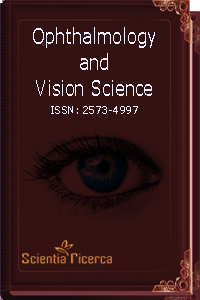
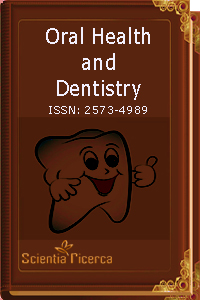
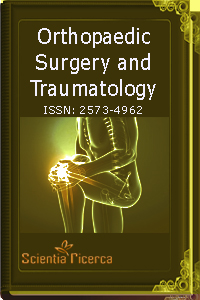


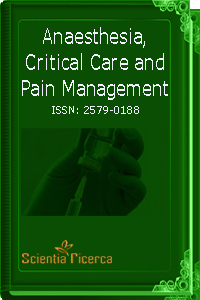
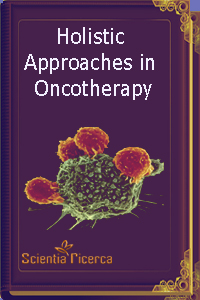
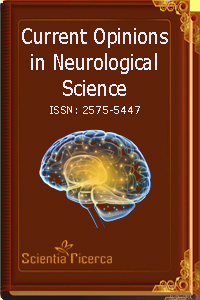
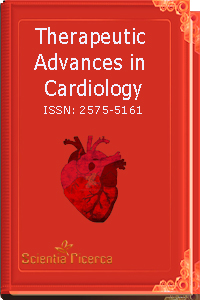
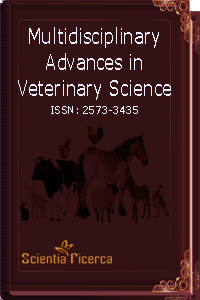
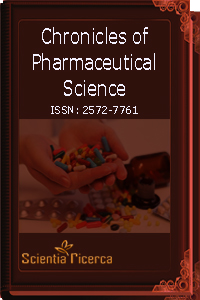
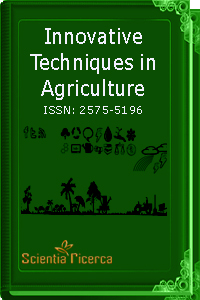

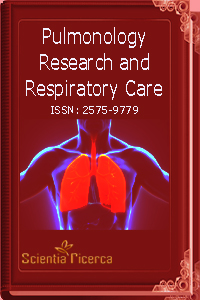
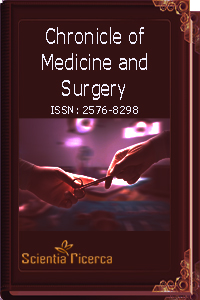

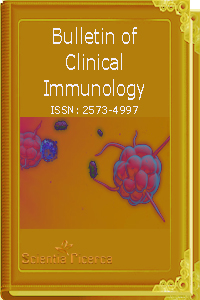
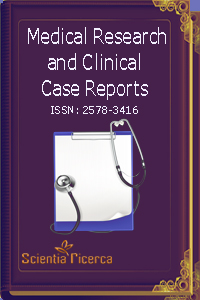
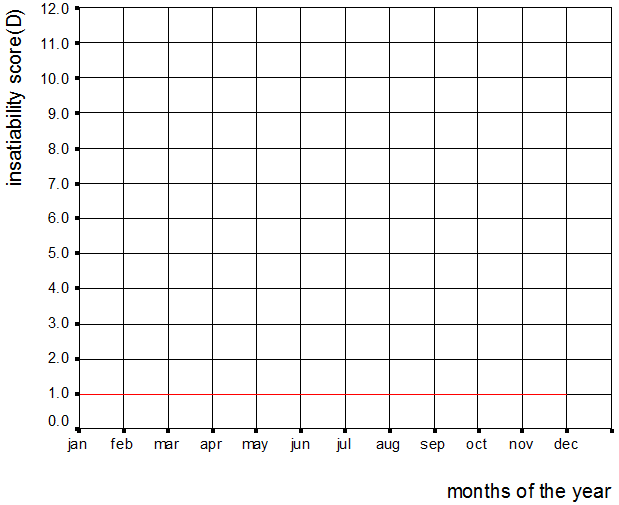
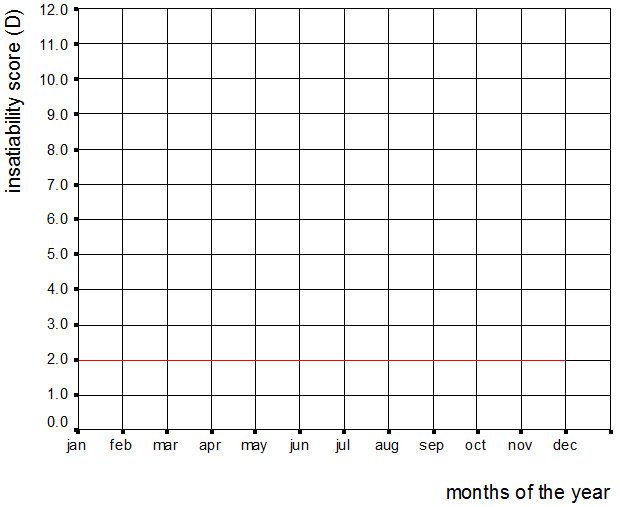
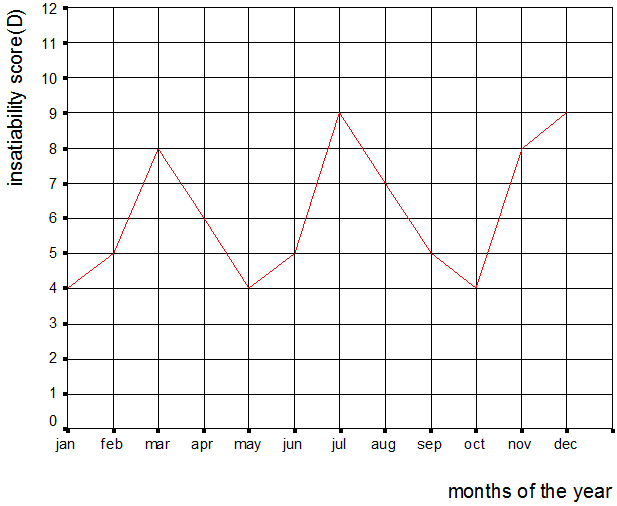
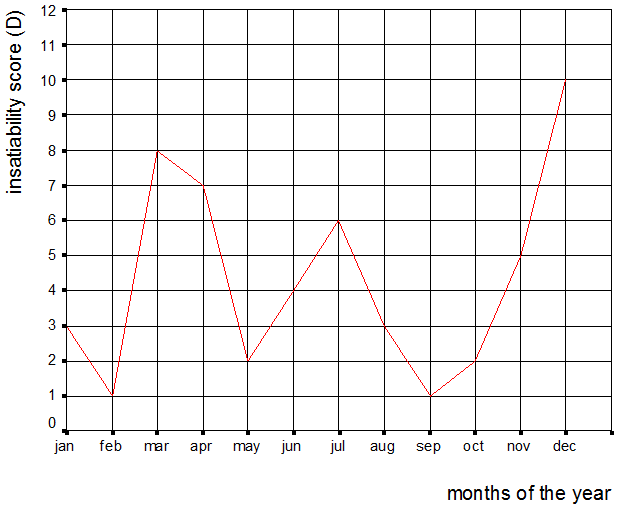
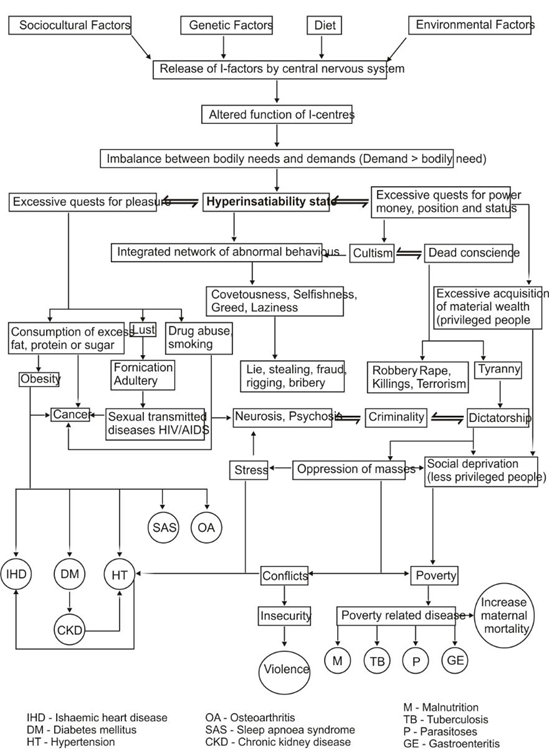
 Scientia Ricerca is licensed and content of this site is available under a Creative Commons Attribution 4.0 International License.
Scientia Ricerca is licensed and content of this site is available under a Creative Commons Attribution 4.0 International License.